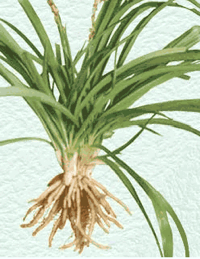 DailyIndia.com reports that “vitality herbs” were the biggest attraction at a recent National Forest Expo in Bhopal, India, and we do not shirk our duty to bring you edited highlights across the entire range of agricultural biodiversity. Will the Indians harvest their herbal Viagras sustainably? Hardly matters; one that caught my eye, because I recognized the Latin name of the common spiderplant of a thousand windowsills, is Chlorophytum borivilianum and it is already being domesticated and grown commercially.
DailyIndia.com reports that “vitality herbs” were the biggest attraction at a recent National Forest Expo in Bhopal, India, and we do not shirk our duty to bring you edited highlights across the entire range of agricultural biodiversity. Will the Indians harvest their herbal Viagras sustainably? Hardly matters; one that caught my eye, because I recognized the Latin name of the common spiderplant of a thousand windowsills, is Chlorophytum borivilianum and it is already being domesticated and grown commercially.
Picture from http://www.allayurveda.com/.